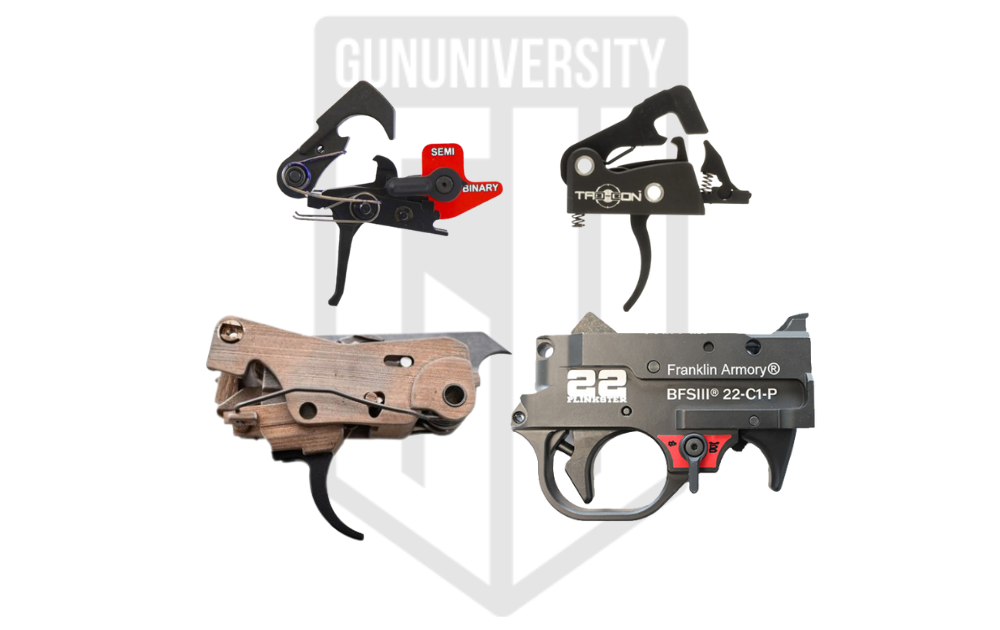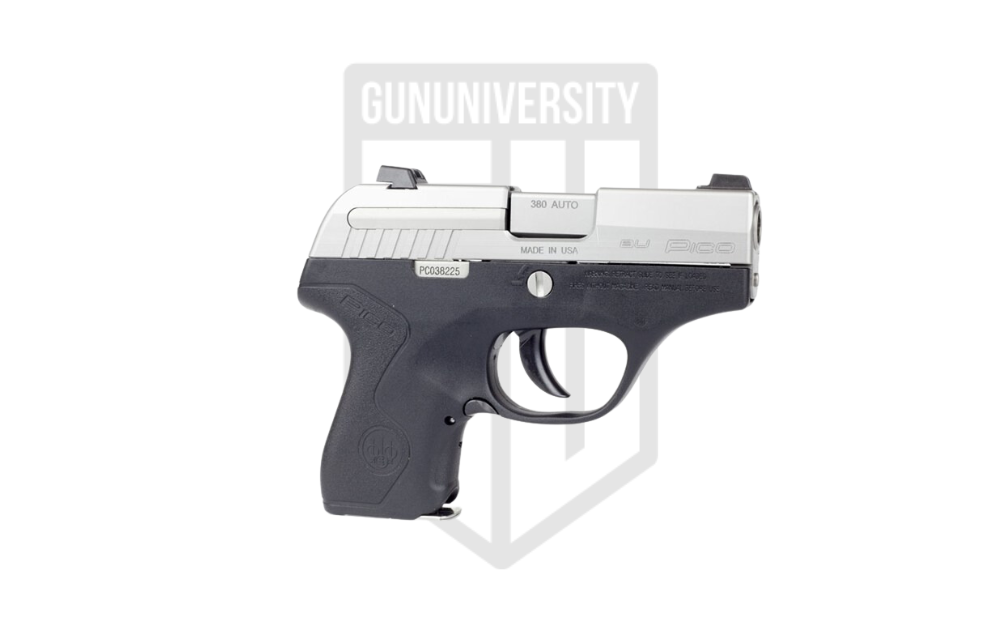Range Bag Essentials: Your Must-Haves!
I spent way too long fumbling with ammo, targets, guns, and safety gear when going to the range. I tried to carry it all at once, and for some reason, I guess buying a range bag never occurred to me. Don’t get wrong; I eventually got there; it just took way too long. Once I got my hands on a well-made and high-quality range bag, I never went back. Range bags make life so much easier. Not just the bag, but the stuff you keep in the bag matters as well.
Today we are going to bring down the essentials for a range bag. We’ll go in-depth for the gear you need to fill your bag and what you’ll need at the range. A properly packed range bag allows you to get the most out of your range trip. It saves time and presents your gear in an organized manner. A properly loaded range bag will also reduce the stress of forgetting this or that when you hit the range.
Below we will be going through;
Choosing Your Range Bag
There are tons of awesome range bags out there, and these purpose-built options are often the best option available. You can adopt a backpack or laptop bag into a range bag, but I really advise a purpose-built option. Purpose-built options often offer pouches, straps, and designs that make it much easier to access your gear at the range.
Generally, two styles of range bags exist. This includes a range backpack and a more duffle bag-like design.
Range backpacks are great if you are carrying your gear from place to place often. Long-range shooters who pack out their expensive glass and ammo to hump it downrange will most certainly love a backpack over a duffle bag.
The downside to a backpack is the room provided and the means to access it. Backpack range bags are somewhat small and don’t offer a ton of room. Also, accessing the gear isn’t as easy as a duffel bag design that lays it all out for you.
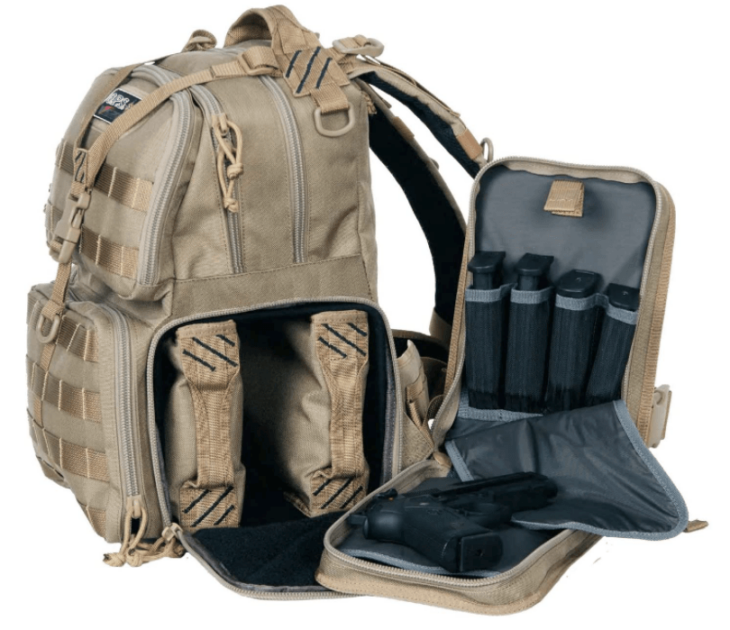
My favorite range backpack would be the GPS Tactical Range Backpack. This thing allows you to safely store your gear, some handguns, and that aforementioned expensive glass. It’s not massive, but it’s well made and can carry those heavy goodies easily. Also, it stands up easily, which helps with access.
Duffle bag style range bags aren’t the best for humping up and downrange and from range to range. However, they often offer larger bags with big wide pockets and main pouches. On the flip side, these bags come in a wide variety of sizes, including medium and small setups. These big pouches and pockets make it easy to pull what you want when you want it over digging through it all for the things you need.
My personal favorite range bag is my almost ten-year-old Blackhawk Sportster Deluxe range bag. Lots of people roll their eyes at Blackhawk, but this big range bag is huge and super functional. Plenty of room for ammo, guns, PPE, targets, and so much more. It’s a big bag that sits perfectly on the range bench and offers you all your goodies.
And when it comes to a pistol range bags, I’m a big fan of the Lynx Defense pistol range bag – an excellent company that is 100% made in America – still a big deal to me personally. Furthermore, they are really well built and thought out.
Honorable mention is the Orca Tactical Range Bag. This is a more moderately sized range bag that’s better for the average shooter who might just be practicing with their CCW and home defense rifle. It’s not great for a 3-Gun shooter or a hardcore shooter but offers plenty of pockets and pouches for easy storage and access.
The Basics
Now that we have your bag let’s talk about all the goodies you can shove into it. Let’s start with the basics of what a good range bag needs. These are the essentials that work with every type of firearm and shooting event.
Eye Protection – Well, duh, gotta protect those peepers. A set of Z87 rated glasses protect your eyes from unburned gunpowder, ricochets, and the rare and unfortunate event in which your firearm explodes. A good set of eyes are a must-have at the range.
Suggested Glasses – Any sunglasses rated z87 will do. However, the Walker’s Sport Glasses with interchangeable lenses are perfect if you want range dedicated glasses for any lighting scenario.
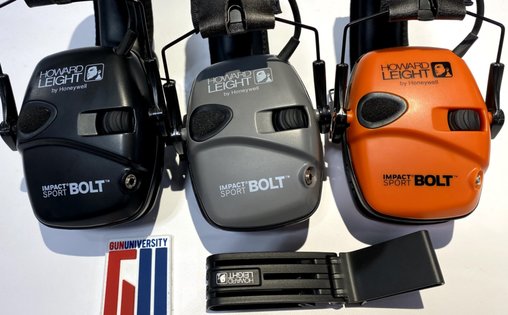
Ear Protection – Guns work through the process of controlled explosions. These are pretty freaking loud, and without ear protection, you’ll quickly obtain some fun and permanent hearing damage. To protect your ears!
My suggested ear pro is the AXIL TRACKR Bluetooth headset is a modern and well-designed set of electronic hearing protection. These utilize a muff style design and can connect to your cell phone or other Bluetooth devices. They also allow you to hear the world around you while instantly silencing gunshots and other loud noises. You can carry on a conversation and still remain protected from the loud explosion around you.
Extra Eyes and Ears – Yep, pack a few extras in case you forget your main sets or bring a new shooter with you. For these extra, just get some cheap ‘squishy’ style earplugs and cheap safety glasses. Store an extra set or two, just in case.
Ammo and Targets – Well, duh, you can’t go to the range without something to shoot. Bring your ammo and targets and enjoy them.
A Stapler + Staples – Pack a simple, lightweight construction stapler with plenty of staples to back it. These are a must-have for keeping your target locked down and easy to shoot. A simple Dewalt stapler with plenty of staples makes it easy to lock down targets both big and small prior to filling them full of holes. A stapler and some staples are way easier to use than tape or sticky targets.
Empty Chamber Indicator – If you are at a public range, you likely will have to unload and show clear at some point during your range trip. As such, you’ll need something to show that your chamber is clear. Empty chamber indicators, chamber flags, and similar items cost about a buck a pop and ensure the weapon is actually clear with no more than a glance.
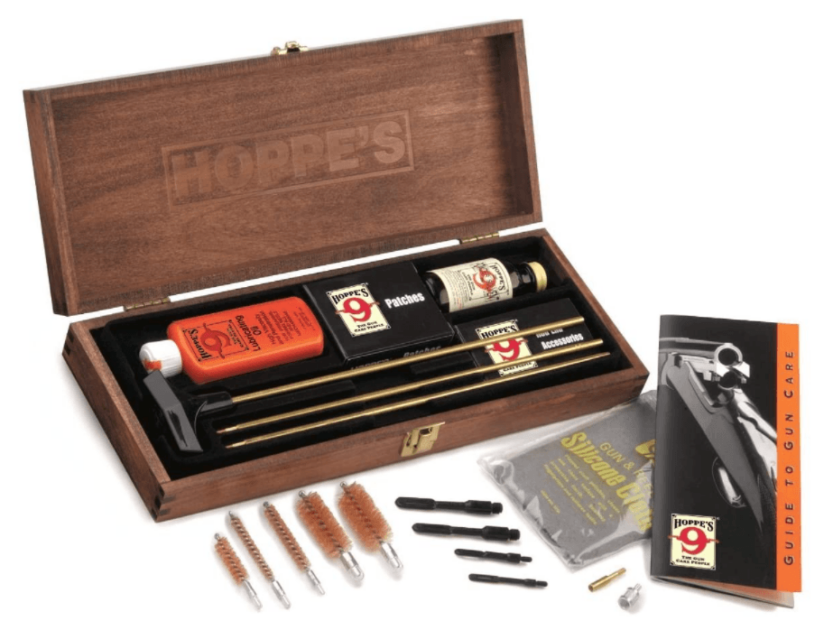
Gun Cleaning Gear – A gun cleaning kit is a must-have and should be appropriate for the firearm you are taking to the range. A rifle needs rifle length cleaning rods or bore snake, a 1911 needs a barrel bushing tool, so on and so forth. The kit should have a little extra lubrication, weapon-appropriate tools, a rag, a cleaning brush, a bore brush, and similar basic cleaning tools.
First Aid Kit – I am a huge proponent of keeping a basic med kit in your range bag. It can literally save a life. A range-based medical kit should be primed to treat burns, splinters, and small injuries, as well as gunshot wounds. I prefer the My Medic Range kit. This packs everything you need to treat common and traumatic wounds at the range.
Beyond the Basics
So we’ve established the basics. With everything above you can go to the range and have a good time. However, you can do better! In fact, you just might have to go beyond basic. Here are a few beyond basic items for the shooter who goes a little harder.
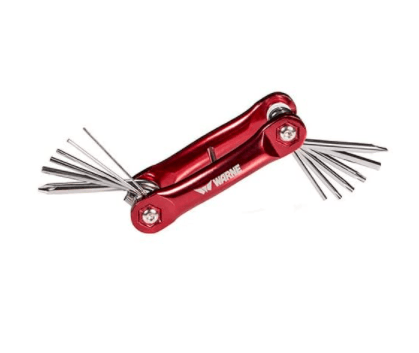
Optic Adjustment Tool – Got optics? Well, if you’re going to the range, you might need to zero them or make adjustments to your zero. Well, you might need a tool for that. Especially if it’s a mini red dot, most optics that require tools come with tools, so grab those.
Even better than that, grab the Warne RT-1. You can make adjustments to your optic, mount optics, and ensure everything is right, tight, and down. I’ve used a Warne RT-1 for years, and it’s an amazing tool to have. It packs a ton of tools into a little folding design that’s easy to pack and superbly useful.
Spare Batteries – Lots of optics use batteries these days, and optics like red dots 100% rely on batteries to function. As such, it’s wise to pack some extra 2032s, 1632s, AAAs, or whatever just in case your optic dies. Keeping a set of spares can be a lifesaver whenever you hit the range and find out your optic is dead.
Optic Lens Pen – Oh, since we’ve been on optics for the last few pics, let’s not forget a way to clean your optics. A good lens pen keeps your gross and oily hands from touching the lens and making it oh so much worse. Leupold makes a great one, but any DSLR lens pen will work extremely well.
If you don’t want to buy a lens pen, then you can grab a lens cloth, and these are extremely easy to find and very cheap. The downside is that these things can get real messy fast. That’s why lens pens work so well. You can protect the portion that cleans the optic, and it won’t get messy riding around your range bag.
A Small Multitool – A little multitool can do wonders at the range for small repairs and disassembly. A pair of pliers makes it easy to extract a piece of brass or to take apart a magazine. Knives, files, and screwdrivers also have their place in helping you get your guns running once more. You can have a loose grip panel on your 1911 or a stuck stock on your AR 15. A multitool makes it easy to free these things.
Any half-decent SOG, Leatherman, or Gerber will get the job done. I like all three companies, but if you want a simple but effective multitool, go with the Gerber Suspension. It’s super cheap and quite stout. It’s perfect for tossing in the range and leaving it there until it’s needed.
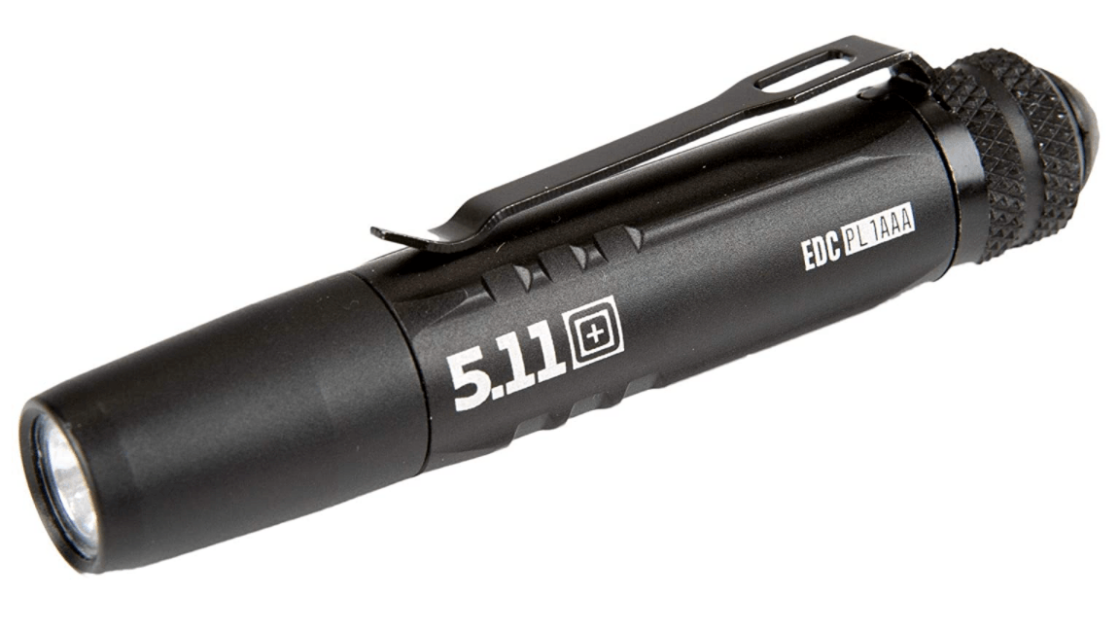
Small Flashlight – In the dim darkness of a range, it’s easy to lose things and can be hard to figure out the exact issue your firearm might be having. Here a flashlight can work wonders. Maybe you can find that ammo you dropped under the bench or look into the chamber of your rifle and identify the malfunction.
Heck, maybe you have to dive deep into your range bag and need to see a bit deeper. A little flashlight goes a long way at the range. You don’t need a 1,000-lumen beast, and a simple penlight will work perfectly. Check out the 5.11 EDC PL or the Streamlight Stylus Pro. Both provide more than enough light and aren’t too big for your range bag.
Going Hardcore
If you are a hardcore shooter who goes beyond plinking or basic training, you can really benefit from a few extra items in your range bag. These items aren’t necessarily essentials for enjoying the range day but can be hugely beneficial to your shooting and training.
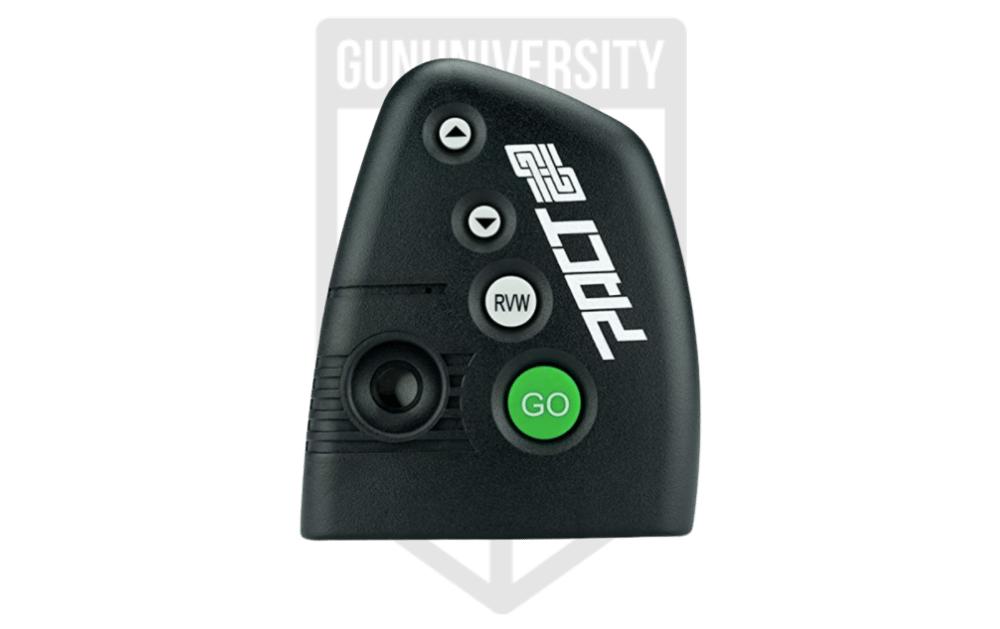
Shot Timer – A shot timer measures your performance via a set of objective data, namely time. Combine the time the shot timer gives you with your accuracy, and you can start figuring out how to get better at shooting. A good shot timer will measure your splits and allow you to set a par time.
You can time your draws, reloads, time on targets, and beyond. A shot timer pushes you to be faster, and if you’re faster, you’re more lethal. My shot timer of choice is the Pocket Pro 2. It’s easy to use, efficient, and very accurate.
Work Gloves – Guns get hot and heat burns skin, so guess what helps if you shoot a lot? A pair of work clothes. Something from Mechanix works extremely well at protecting your hands and keeping you from getting a nasty burn at the range. Hot barrels, actions, suppressors, and brass will bite you if you aren’t careful. A pair of gloves or even shooting gloves go a long way.
A Log Book – A logbook allows you to take your times, group sizes, and other data and jot it down. This way, you can continue to improve and track your improvement. Writing down the results of your Bill drill is the only way to keep track of your progress towards better skill sets.
Trash Bags – If you shoot on public land or at a public range, you’ll need to pack out your trash. This includes ammo boxes, brass, targetry, and the like. Leaving it out on the range makes you a clown, so bring trash bags and clean up after yourself.
Shooting Mat – A shooting mat might not be inside of your range bag, but you might have one hanging off the side. For this something like the Padded Magic Carpet Mat by Eberstock might be a good consideration for something that’s light-weight and small enough to pair with your range bag.
To The Range!
Pack your range bag up, load it down, and hit the range. Now that you have the gear, you have nothing to stop you from getting out there and sharpening those skills or just having some fun. Range time is the best time and going with an organized range bag is a surefire way to succeed and make the most of your range time.
What do you keep in your range bag? Anything we should add? Let us know below!
Recent Posts
July 26, 2024
July 26, 2024
July 25, 2024

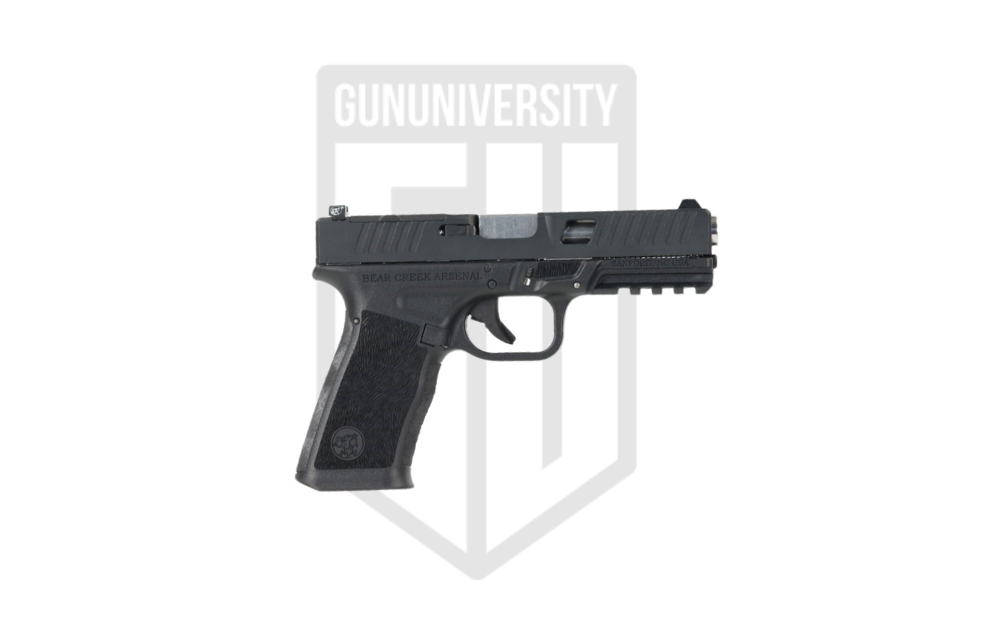
![The Best Shooting Hearing Protection in 2024 [Tested]](https://gununiversity.com/wp-content/uploads/2021/09/best-shooting-hearing-protection.jpg)
